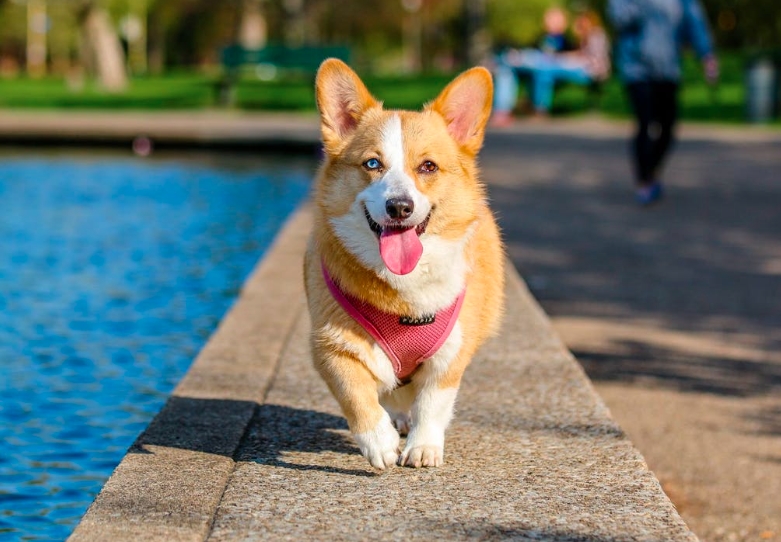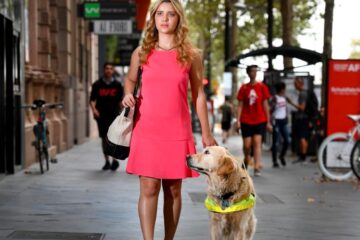Dogs have been man’s best friend for thousands of years. They were the first animal to be domesticated by humans, and their loyalty and companionship have been invaluable to us ever since. Throughout history, dogs have been bred to do different tasks, such as hunting and guarding, as well as simply providing companionship. Today, dogs are still a major part of our lives, providing us with unconditional love and companionship.
The importance of dogs in human society cannot be overstated. From providing security and protection to comforting those in need, dogs are an integral part of our lives. They can be a source of comfort and solace, even in difficult times. Dogs have been known to help people with depression, anxiety, and other mental health issues. In addition, dogs provide us with physical activity, companionship, and unconditional love.
In this in-depth look at different dog breeds, we will explore the various types of dogs and their various characteristics. We will look at the breeds that are best suited for different lifestyles, as well as the different temperaments and behaviors associated with each breed. We will also examine the various health issues associated with different breeds, as well as how to best care for and train them. Finally, we will look at the different types of dogs that are available and the various benefits that can be gained from owning them.

Characteristics of different dog breeds
Physical Characteristics
The physical characteristics of different dog breeds vary greatly depending on the type of breed. Some breeds are small and delicate, while others are large and powerful. Each breed has its own unique set of physical characteristics.
Smaller breeds tend to have a more delicate frame with a slender body, a pointed snout, and a daintier set of legs and paws. These breeds often have shorter coats and a more distinct facial structure than their larger counterparts.
Larger breeds tend to have a thicker and more muscular frame, a boxier head, and a broader back. They often have thicker coats and longer legs and tails than their smaller counterparts.
Temperament and Behavior
The temperament and behavior of different dog breeds can also vary greatly. Some breeds are known to be more active and energetic, while others are more relaxed and laid back. Some are known to be more social and outgoing, while others may be more independent.
- Active breeds tend to be more energetic and playful. They often require more exercise and stimulation than other breeds and may require more supervision when outdoors.
- Relaxed breeds tend to be more relaxed and laid back. They may not require as much exercise and stimulation as active breeds and may be content to relax for most of the day.
- Social breeds tend to be more social and outgoing. They often get along well with other animals and people, and may even be willing to learn tricks and commands.
- Independent breeds tend to be more independent and may be less likely to get along with other animals or people. They may require less supervision and may be content to relax in their own space.
Rare dog breeds and their unique features
Rare dog breeds are becoming increasingly popular all over the world. Some of these breeds are the Azawakh, Chinook, Otterhound, Lagotto Romagnolo, Kooikerhondje, Xoloitzcuintli and Thai Ridgeback. These breeds have their own unique features and characteristics that make them stand out among other breeds.
Azawakh is a breed of dog that is native to the Sahara desert. It is a tall, elegant breed of dog with a very unique coat and distinctive facial features. It is an independent, strong-willed and loyal breed. The Azawakh has a short coat and is known for its speed and agility. It is a good companion dog that is loyal and protective of its family.
Chinook is a rare breed of sled dog from New Hampshire. It is a medium-sized dog that is built for endurance and strength. It is a loyal and affectionate breed with a gentle nature and a friendly disposition. Chinooks are intelligent and eager to please, making them an excellent family pet.
Otterhound is an old British breed of dog that is now quite rare. It is a large, shaggy-coated breed with an intelligent and friendly temperament. It is a strong swimmer and loves to hunt otters, which is where it gets its name. Otterhounds are gentle and loyal and make great family pets.
Lagotto Romagnolo is a rare Italian breed of dog. It is a small, intelligent and friendly breed with a curly, woolly coat. It is a good family pet and is known for its strong sense of smell and excellent retrieving abilities. Lagotto Romagnolo is a loyal and devoted companion and is an excellent watchdog.
Kooikerhondje is a rare Dutch breed of duck-hunting dog. It is a small, active breed with a unique coat and distinctive color pattern. Kooikerhondje is an intelligent and playful breed that is loyal and devoted to its family. It is an excellent hunting dog and a great family companion.
Xoloitzcuintli, or Mexican Hairless Dog, is an ancient breed of dog that is now quite rare. It is a small, hairless breed with a distinct look and personality. Xoloitzcuintli is an intelligent and loyal breed that makes an excellent family pet. It is a good watchdog and loves to be around its family.
Thai Ridgeback is an ancient breed of dog that is native to Thailand. It is a large, muscular breed with a unique ridge of hair down its back. Thai Ridgebacks are intelligent and loyal, and are known for their strength and agility. They make excellent guard dogs and are very protective of their families.
These rare dog breeds have their own unique features and characteristics that make them stand out among other breeds. They are loyal and devoted companions and make excellent family pets. Whether you are looking for a loyal companion or a guard dog, these rare breeds can provide you with the perfect pet.
Best dog breeds for different types of owners
Finding the best dog breed for different types of owners can be a difficult task. Each breed has its own unique personality and characteristics, so it’s important to choose the breed that best fits your lifestyle and needs. Families with children should consider breeds that are known to be friendly and good-natured, such as Golden Retrievers, Labradors, and Bernese Mountain Dogs. Active individuals should look for breeds that can keep up with their physical activities, such as Australian Shepherds, Beagles, and Border Collies. Senior citizens should look for breeds that are easy to care for, such as Maltese, Pugs, and Shih Tzus. Apartment dwellers should look for breeds that are small and quiet, such as Chihuahuas, Poodles, and Yorkshire Terriers. First-time dog owners should look for breeds that are easy to train, such as Collies, Labradors, and Golden Retrievers.
It’s important to remember that no two dogs are the same and that the most important factor in choosing the best breed is making sure that the dog you choose is the right fit for you and your family. Before you commit to a breed, it’s best to research the breed’s characteristics, personality, and temperament to make sure that the breed is a good fit for you. Additionally, it’s also important to consider the cost of owning and caring for the breed, as well as any potential health issues that the breed may have. By doing your research, you can ensure that you choose the best breed for your lifestyle and needs.

Dog health and care
Proper Nutrition:
Good nutrition is essential for dogs’ overall health and well-being. Dog food should be chosen based on the age, activity level, and health of the individual dog. Providing a balanced diet of healthy proteins, carbohydrates, fats, vitamins, minerals, and antioxidants helps to ensure that the dog is getting the nutrients they need. It is also important to avoid overfeeding.
Exercise and Playtime:
Exercise and playtime are important for dogs of all ages and breeds. Regular exercise helps to keep the dog’s muscles strong, improve cardiovascular health, and reduce stress. Dogs may need different levels of exercise depending on their age and breed, so it is important to find the right balance for each dog. Playtime is also important, as it helps to keep the dog mentally stimulated and reduces boredom.
Grooming and Hygiene:
Grooming and hygiene are essential for keeping a dog healthy. Regular brushing helps to reduce shedding and improve the condition of the coat, while regular baths and nail trims help to keep the dog clean and free of parasites. It is also important to check for any signs of skin irritation or parasites, and to clean the dog’s ears and teeth regularly.
Common Health Issues and Their Prevention:
Common health issues in dogs can include obesity, dental disease, and skin problems. It is important to be aware of any signs of illness, as early detection and treatment can help to reduce the severity of the condition. Prevention is always the best medicine, so it is important to feed the dog a balanced diet, provide regular exercise and playtime, and keep up with hygiene and grooming. Additionally, it is important to ensure that the dog is kept up-to-date on all vaccinations and check-ups.
Conclusion
From the noble, dignified Great Dane to the hardy, loyal Siberian Husky, dogs truly are man’s best friend. They bring us companionship, loyalty, and unconditional love, as well as an outlet for physical and mental stimulation. Dogs come in all shapes, sizes, and temperaments, and each breed has its own unique characteristics and traits that make it special. With proper care and training, each breed can be a wonderful addition to your family.
No matter which breed you choose, owning a dog is a long-term commitment and responsibility. Dogs require a lot of attention, training, and exercise, and it is important to choose the breed that best meets your family’s lifestyle. Researching different breeds and talking to breeders, veterinarians, and knowledgeable owners can help you make an informed decision about which breed is right for you.
Dogs have been our loyal friends for centuries, and will continue to be so for many years to come. With so many wonderful breeds to choose from, you can be sure that you’ll find the perfect companion to share your life with. So, don’t be afraid to take the plunge and welcome a new canine family member into your home – you’ll be glad you did.
FAQs
1. What is the most popular dog breed?
The most popular dog breed in the United States is the Labrador Retriever.
2. What are the most common types of dog breeds?
The most common types of dog breeds are retrievers, hounds, terriers, toy breeds, working breeds, and herding breeds.
3. What is the life expectancy of different dog breeds?
Life expectancy can vary widely between dog breeds, ranging from as little as 8 years for large breeds to as much as 20 years for smaller breeds.
4. What are the differences between purebred dogs and crossbreeds?
A purebred dog is a dog that has been bred to have a consistent set of characteristics throughout its lineage, while a crossbreed is a mix of two or more different dog breeds.
5. Are there specific breeds that are better suited for particular lifestyles?
Yes, there are some dog breeds that are better suited for particular lifestyles. For example, sporting breeds are often used for hunting and outdoor activities, while toy breeds often do better in apartments or smaller living spaces.
6. What different types of coats do dogs have?
Dogs can have a variety of different coat types, including short, double, smooth, and wire-haired.
7. What are the most common health issues for different dog breeds?
Some of the most common health issues for different dog breeds include hip dysplasia, eye problems, ear infections, and skin allergies.
8. What is the best diet for different dog breeds?
The best diet for different dog breeds will depend on the breed and size of the dog. Generally, a balanced diet of proteins, fats, carbohydrates, and vitamins is recommended.
9. What are the grooming needs for different dog breeds?
The grooming needs for different dog breeds will depend on the breed and size of the dog. Generally, all dogs should have their nails trimmed, fur brushed, and teeth brushed regularly.
10. Are there any specific breeds that are better suited for families with children?
Yes, there are some dog breeds that are known to be more tolerant and patient with children. These include Labrador Retrievers, Golden Retrievers, Vizslas, and Beagles.


















